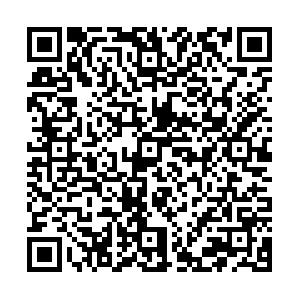Correlation Analysis of Immune Function of Tuberculosis Patients Infected with COVID-19
-
摘要:
目的 分析肺结核患者共感染新冠肺炎的免疫学指标,明确其免疫状态,探讨相关指标与免疫状态的关系及特点。 方法 以昆明市第三人民医院收治的TB共感染COVID-19者为研究组 (n = 111),另选同期未感染COVID-19的TB患者为对照组 (n = 1649),分析2组血清学免疫指标。 结果 经PSM倾向性匹配排除年龄、性别等混杂因素后,TB-COVID组CD19+、CD3+、CD4+、lymphocyte和IL-8水平低于TB组,IL-10、IL-17、IL-6高于TB组,差异有统计学意义 (P < 0.05);对以上差异指标做ROC曲线,分析TB-CCVID免疫危险因素,CD19+、IL-10和IL-6对TB感染COVID-19的灵敏度和特异性分别为71.4%和56.7%、59.1%和77.0%、59.1%和77.7%,AUC分别为0.659 (95%CI:0.583~0.736,P < 0.05)、0.645 (95%CI:0.558~0.732,P < 0.05)、0.649 (95%CI:0.564~0.734,P < 0.05);根据年龄划分亚组比较,结果TB-COVID组IL-1β、IL-2、IL-4、IL-8、TFN-α、IL-12p70在 21~40岁急剧攀升远超TB组,并随年龄增长逐渐回落。 结论 TB患者共感染COVID-19后免疫状态交叉影响,相较于TB患者,TB-COVID多项免疫指标降低,与细胞免疫及细胞因子风暴相关,需加强关注。 Abstract:Objective To analyze the immunological indicators of TB patients co-infected with COVID-19, clarify their immune status, and explore the relationship and characteristics of relevant indicators with immune status. Methods The study group consisted of TB patients infected with COVID-19 admitted to the Third People's Hospital of Kunming City (n = 111), while TB patients who were not infected with COVID-19 during the same period were selected as the control group (n = 1649) for the analysis of serum immunological indicators. Results After excluding confounding factors such as age and gender through PSM propensity matching, the TB-COVID group showed lower levels of CD19+, CD3+, CD4+, lymphocyte, and IL-8 compared to the TB group, while IL-10, IL-17, and IL-6 were higher in the TB-COVID group, with statistically significant differences (P < 0.05). ROC curve analysis of the above differing indicators was performed to analyze the immune risk factors of TB-COVID. The sensitivity and specificity of CD19+, IL-10, and IL-6 for TB infection with COVID-19 were 71.4% and 56.7%, 59.1% and 77.0%, 59.1% and 77.7%, respectively. The AUC values were 0.659 (95%CI: 0.583~0.736, P < 0.05), 0.645 (95%CI: 0.558~0.732, P < 0.05), and 0.649 (95%CI: 0.564~0.734, P < 0.05). When comparing subgroups based on age, in the TB-COVID group, IL-1β, IL-2, IL-4, IL-8, TFN-α, and IL-12p70 sharply increased in the 21-40 age group far beyond the TB group, and gradually declined with increasing age. Conclusion TB patients have a weakened immune system after being infected with COVID-19, with multiple immune indicators lower compared to TB patients. This is related to cell immunity and cytokine storm, so we need to pay more attention to TB-COVID cases. -
Key words:
- Tuberculosis /
- COVID-19 /
- Immune function /
- Co-infection
-
表 1 TB-COVID组和TB组流行病学比较[M(P25,P75)]
Table 1. Epidemiological comparison between TB-COVID and TB [M(P25,P75)]
检验指标 TB-COVID TB Z P 年龄(岁) 49 (31,62 ) 44 (29,57 ) −2.117 0.034* 性别(男∶女) 111(70∶41) 1649(880∶769) 2.871 0.047* *P < 0.05。 表 2 TB-COVID组和TB组实验室指标分析[M(P25,P75)]
Table 2. Analysis of laboratory indicators in TB-COVID and TB [M(P25,P75)]
检验指标 TB-COVID TB Z P CD16+CD56+(个/μL) 191(148,285) 169(109,262) 1.048 0.298 CD19+(个/μL) 109(43,209) 171(104.5,270) −4.417 <0.001* CD3+(个/μL) 830(584,1131) 1005(737.5,1317) −3.206 0.043* CD4+(个/μL) 437(322,631) 567(405.5,765) −3.516 0.006* CD8+(个/μL) 350(223,490) 381(268,538.5) −3.044 0.469 CD4+/CD8+(个/μL) 1.46(0.99,2.04) 1.47(1.12,1.905) −1.507 0.057 CD4+CD8+(个/μL) 12(8,22) 16(11,25) −2.681 0.086 CD4-CD8−(个/μL) 40(22,68) 43(24,71) −1.406 0.096 NK(个/μL) 50(26,75) 61(38,97.5) −2.761 0.074 lymphocyte(个/μL) 1210.0(893.0,1597.0) 1400.0(1063.5,1827.5) −2.913 0.042* IL-10(pg/mL) 2.97(2.42,5.37) 2.71(2.45,3.115) 3.573 0.007* IL-12p70(pg/mL) 2.59(2.24,3.14) 2.41(2.23,2.67) 2.435 0.052 IL-17(pg/mL) 5.72(1.36,11.47) 2.36(1.45,9.39) 2.465 0.021* IL-1β(pg/mL) 2.90(1.94,6.10) 4.30(2.11,8.78) −1.542 0.308 IL-2(pg/mL) 2.50(2.10,3.09) 2.49(2.22,2.91) 0.389 0.436 IL-4(pg/mL) 2.40(1.74,2.62) 2.14(1.86,2.515) 0.601 0.834 IL-6(pg/mL) 9.73(3.11,18.85) 3.72(2.83,6.02) 3.665 0.001* IL-8(pg/mL) 1.31(0.87,3.69) 1.32(1.11,4.665) −1.653 0.034* IFN-α(pg/mL) 2.50(2.21,3.14) 2.64(2.35,3.00) −0.475 0.531 IFN-γ(pg/mL) 3.36(2.29,7.88) 4.00(2.83,7.84) −0.007 0.591 TFN-α(pg/mL) 2.48(1.47,2.93) 2.19(1.52,3.23) 1.048 0.338 *P < 0.05。 -
[1] WHO. Global tuberculosis report 2023; World Health Organization [EB/OL]. [2023-11-7]. https://www.who.int/teams/global-tuberculosis-programme/tb-reports. [2] Bagcchi S. WHO's global tuberculosis report 2022[J]. Lancet Microbe,2023,4(1):e20. doi: 10.1016/S2666-5247(22)00359-7 [3] Azkur A K,Akdis M,Azkur D,et al. Immune response to SARS-CoV-2 and mechanisms of immunopathological changes in COVID-19[J]. Allergy,2020,75(7):1564-1581. doi: 10.1111/all.14364 [4] Sokolowska M,Lukasik Z M,Agache I,et al. Immunology of COVID-19: Mechanisms,clinical outcome,diagnostics,and perspectives-a report of the European Academy of Allergy and Clinical Immunology (EAACI)[J]. Allergy,2020,75(10):2445-2476. doi: 10.1111/all.14462 [5] Zhang H P,Sun Y L,Wang Y F,et al. Recent developments in the immunopathology of COVID-19[J]. Allergy,2023,78(2):369-388. doi: 10.1111/all.15593 [6] TB/COVID-19 global study group. Tuberculosis and COVID-19 co-infection: Description of the global cohort[J]. Eur Respir J,2022,59(3):262. [7] Luke E,Swafford K,Shirazi G,et al. TB and COVID-19: an exploration of the characteristics and resulting complications of co-infection[J]. Front Biosci (Schol Ed),2022,14(1):6. [8] 高雯琬, 郭建琼, 李同心, 等. 《结核病免疫治疗专家共识(2022年版)》要点解读[J]. 结核与肺部疾病杂志, 2023, 4(3): 194-197. [9] Wik J A,Skålhegg B S. T cell metabolism in infection[J]. Front Immunol,2022,13:840610. doi: 10.3389/fimmu.2022.840610 [10] de Martino M,Lodi L,Galli L,Chiappini E. Immune response to mycobacterium tuberculosis: A narrative review[J]. Front Pediatr,2019,7:350. doi: 10.3389/fped.2019.00350 [11] 邓小博,马欢欢,俞荣,等. 新冠病毒感染后细胞免疫研究进展[J]. 中华医院感染学杂志,2022,32(10):1590-1595. [12] 王黎霞,成诗明,周林,等. 肺结核诊断 WS 288—2017[J]. 中国感染控制杂志,2018,17(7):642-652. [13] 中国国家卫生委编委. 新型冠状病毒感染诊疗方案(试行第十版)[J]. 传染病信息,2023,36(1):18-25. [14] Visca D,Ong C W M,Tiberi S,et al. Tuberculosis and COVID-19 interaction: A review of biological,clinical and public health effects[J]. Pulmonology,2021,27(2):151-165. doi: 10.1016/j.pulmoe.2020.12.012 [15] Ahmed A,Vyakarnam A. Emerging patterns of regulatory T cell function in tuberculosis[J]. Clin Exp Immunol,2020,202(3):273-287. doi: 10.1111/cei.13488 [16] Hu B,Huang S,Yin L. The cytokine storm and COVID-19[J]. J Med Virol,2021,93(1):250-256. doi: 10.1002/jmv.26232 [17] Riou C,du Bruyn E,Stek C,et al. Relationship of SARS-CoV-2-specific CD4 response to COVID-19 severity and impact of HIV-1 and tuberculosis coinfection[J]. J Clin Invest,2021,131(12):e149125. doi: 10.1172/JCI149125 [18] Jarczak D,Nierhaus A. Cytokine Storm-Definition,causes,and implications[J]. Int J Mol Sci,2022,23(19):11740. doi: 10.3390/ijms231911740 [19] Yang L,Xie X,Tu Z,et al. The signal pathways and treatment of cytokine storm in COVID-19[J]. Signal Transduct Target Ther,2021,6(1):255. doi: 10.1038/s41392-021-00679-0 [20] Murakami M,Kamimura D,Hirano T. Pleiotropy and specificity: Insights from the interleukin 6 family of cytokines[J]. Immunity,2019,50(4):812-831. doi: 10.1016/j.immuni.2019.03.027 [21] Moore J B,June C H. Cytokine release syndrome in severe COVID-19[J]. Science,2020,368(6490):473-474. doi: 10.1126/science.abb8925 [22] Swanepoel J,van der Zalm M M,Preiser W,et al. SARS-CoV-2 infection and pulmonary tuberculosis in children and adolescents: A case-control study[J]. BMC Infect Dis,2023,23(1):442. doi: 10.1186/s12879-023-08412-8 -






 下载:
下载:



